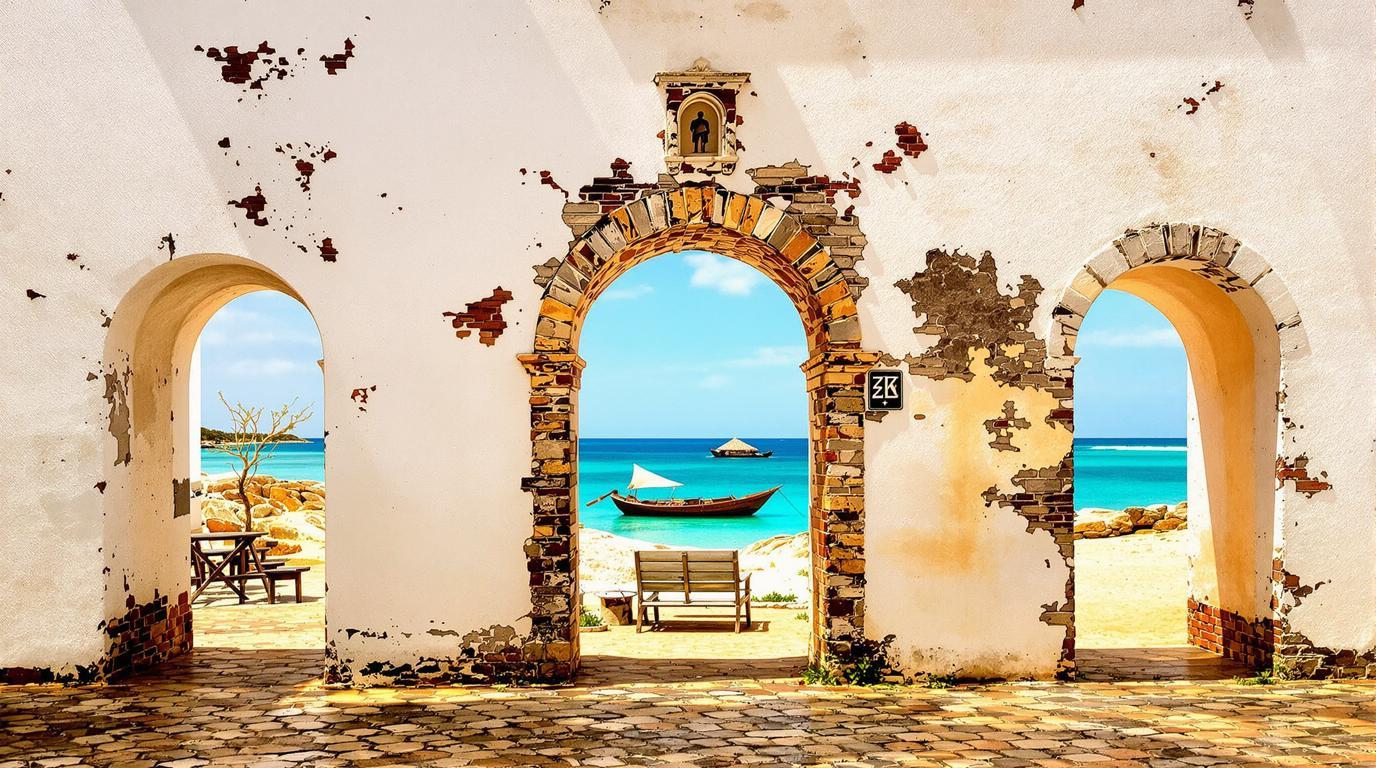Concealed along Mozambique’s southeastern coastline, Inhambane whispers tales of colonial conquest and tropical paradise that most travelers have yet to discover. This provincial capital, pronounced “in-yam-bah-neh,” stands as one of the oldest settlements on the East African coast, where centuries-old Portuguese architecture meets pristine beaches in a blend that feels magically untouched by mass tourism.
A living museum of Portuguese colonial legacy
Walking Inhambane’s narrow streets feels like stepping through an open-air museum. The town’s architectural heritage dates back to the 15th century when Portuguese explorers first arrived. The Cathedral of Our Lady of Conception dominates the skyline, its neo-classical facade a testament to European influence that has withstood tropical storms and political upheavals.
The cathedral tells our story of resilience. Through colonization, independence, and civil war, these walls have remained standing, just like the spirit of our people,” explains João Cossa, a local historian.
Where travelers find Africa’s most pristine coastline
Just 30 minutes from Inhambane’s colonial center lies Tofo Beach, a sweeping crescent of golden sand that rivals Brazil’s most magical bays. Unlike the crowded shores of Mozambique’s more developed regions, Tofo offers unspoiled beauty with a laid-back atmosphere that attracts divers, surfers, and solitude-seekers.
Nearby Barra Beach provides another slice of paradise where palm trees sway against a backdrop of turquoise waters. Both beaches offer something increasingly rare in today’s world – stretches of coastline where footprints in the sand still feel like a discovery.
The underwater safari that rivals land-based game drives
Inhambane’s waters host what marine biologists call “the African underwater Big Five.” Whale sharks, manta rays, humpback whales, dolphins, and sea turtles converge in these nutrient-rich currents, creating one of Africa’s premier diving destinations. Unlike other diving hotspots worldwide, encounters here often happen with no other boats in sight.
I’ve been diving for 20 years across five continents, but nowhere matches Inhambane’s waters. You can swim alongside a whale shark in the morning and be completely alone with it – that’s impossible in most places now,” says Maria Gonzalez, a marine conservation expert.
A marketplace where centuries of trade converge
Inhambane’s central market pulsates with the energy of commerce that has defined this port town for generations. Arabic traders, Portuguese colonists, and local Tsonga people have exchanged goods here for centuries. Today, the market displays an intoxicating array of spices, cashews, fresh seafood, and handcrafted items that reveal the region’s multicultural history.
The market experience rivals the cultural immersion found in places where ancient traditions remain untouched, with vendors speaking local dialects that blend Portuguese with indigenous languages.
Praça da OMM: The town’s beating heart
This vibrant square serves as Inhambane’s social center where locals gather under acacia trees to play bao (a traditional board game), discuss politics, and watch the world go by. The square is surrounded by colonial-era buildings reminiscent of architecture you might find in medieval Portuguese towns, creating a visual dialogue between Africa and Europe.
The sunset dhow sailing experience
Traditional wooden dhow boats with triangular sails have navigated Inhambane Bay for centuries. At sunset, these silhouetted vessels against a tangerine sky create scenes that rival the dramatic settings of Greece’s coastal monasteries. Local fishermen often offer visitors impromptu cruises, complete with freshly caught seafood and stories passed down through generations.
Where to stay: Colonial charm meets beachfront luxury
Accommodation options range from renovated colonial homes in Inhambane town to rustic beach lodges in Tofo and Barra. Complexo Nyumba offers rooms in a restored Portuguese mansion, while Barra Beach Club provides oceanfront bungalows where the Indian Ocean’s waves serve as your alarm clock.
The mysterious singing dunes phenomenon
The coastal dunes between Tofo and Barra beaches create an acoustic phenomenon similar to Scotland’s singing beaches. When conditions are right, the wind passing over perfectly shaped dunes creates harmonious tones that local legends attribute to ancestral spirits communicating with the living.
My grandmother taught me that when the dunes sing, it means our ancestors are happy with how we are living. Tourists find it magical, but for us, it’s sacred,” shares Elena Mahumane, a Tofo resident.
Inhambane offers travelers something increasingly precious – a destination where authenticity hasn’t been sacrificed for tourism. Here, colonial history, natural splendor, and vibrant culture converge in ways that haven’t yet made it to Instagram feeds or travel bucket lists – but inevitably will.
